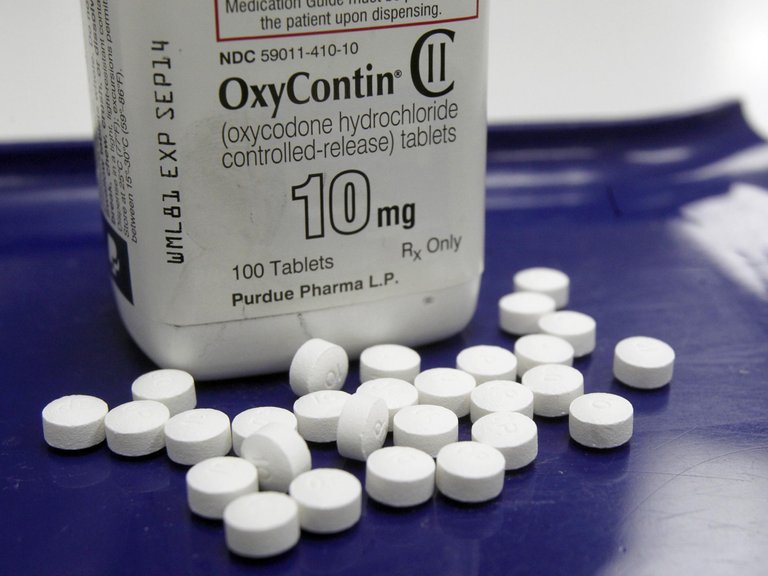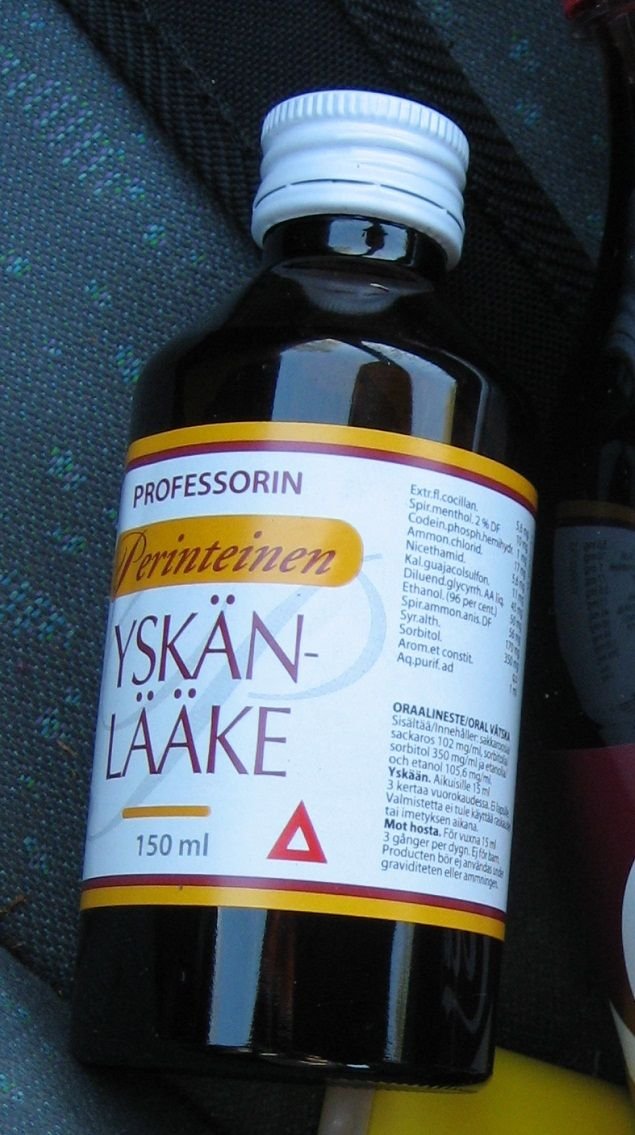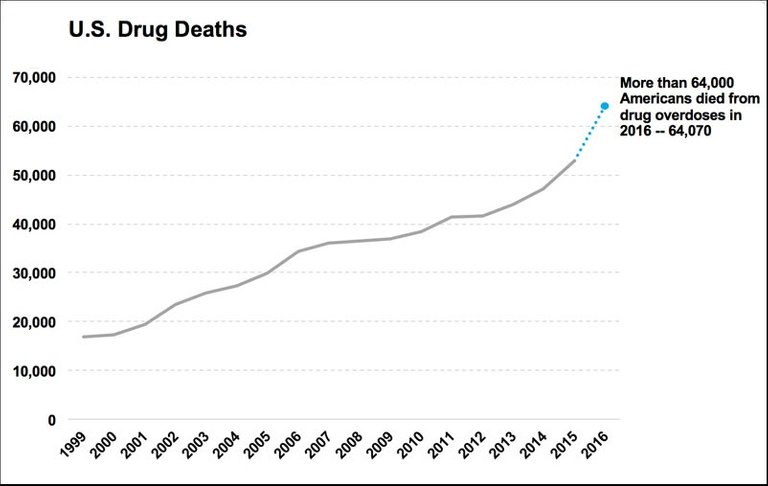Hi steemian, as a social analyst am trying to create more awareness on drug abuse' a concentration on codeine. My write up provide you the following;
what is drug abuse
General overview of codeine
Discovery and manufacturing of codeine
History of codeine
Codeine in U S
Australia
Effect and Abuse of codeine
Abuse of codeine
side effect
Sign of abusing codeine
withdrawal from addiction
What is Drug Abuse and Drug Addiction?
image
Codeine (3-methylmorphine) is a narcotic medication that is an alkaloid found in opium. All narcotic drugs are either processed from the poppy plant or synthetic analogs of substances found in opium, which is processed from the poppy. Therefore, codeine belongs to a large class of familiar drugs, such as heroin, morphine, OxyContin (oxycodone), Vicodin (hydromorphone), etc. Most of the drugs in this class are powerful analgesic drugs that can be used to control pain, and codeine is no exception. Codeine, however, is most commonly found in other medications such as cough suppressants, and it may be used as a sleep enhancer in some cases. It is typically delivered in pill or liquid form for medicinal reasons. Codeine is a controlled substance, but it has two different classification.Drug abuse, also known as substance abuse, is a condition where a person persists in using a substance despite negative consequences. The National Institute on Drug Abuse, a division of the government’s National Institutes of Health, estimated that in 2012, nearly 24 million Americans age 12 or older “had used an illicit drug or misuse of a psychotherapeutic medication (such as a pain reliever, stimulant, or tranquilizer) in the past month 
The History of the Discovery and Manufacturing of Codeine
Opium, coming from the opium poppy plant, was popular in England as early as 1704. In those early days, opium was usually sold in elixirs such as paregoric, which were marketed as “pain soothers”. In 1804, a German pharmacist discovered how to isolate morphine from opium, which gave rise to the discovery in 1832 of codeine by Pierre Robiquet, a French chemist. The name, “codeine” comes from the Greek word that refers to the head of the poppy plant.
 image.
image.
Chemist and pharmacist continued to be excited about the medicinal properties of opium and many drugs that are still used today were isolated from these early experiments. Codeine is the “least addictive and safest” of all of the opiate drugs prescribed today, which accounts for its being the most widely used drug within this category of analgesics (falling into a group of drugs that most people call “pain-killers”). (It should be remembered that being the least addictive and safest doesn’t mean that Codeine is not addictive or safe… more about this later.)
Drug manufacturers have had to depend on using the tar from opiate poppies to synthesize morphine, codeine and almost all of the other opiate-based drugs, which is a problem since President’s Nixon’s War on Drugs made it increasingly difficult to obtain these poppies that grow mostly in areas of the world that are unfriendly to America’s pharmaceutical interest, such as Afghanistan. Drug manufacturers have had to barter with heroin dealers for the purchase of this raw codeine product. This led chemist to the discovery of a method to synthesize codeine from coal tar, which eliminated the need for having the original black-tar opium and freed the drug companies from having to compete with the illicit drug cartels.
The History Codeine Use
Codeine Use
The most common medical use of Codeine is related to its ability to suppress or even end chronic coughing, medically called an antitussive. Almost all cough syrups in the United States that require a prescription contain Codeine. All opiate compounds help reduce nausea and/or diarrhea and codeine is used in many of the compounds since it is the weakest opiate that will treat these symptoms without causing as many side effects and a lower probability of physical addiction.
Since Codeine is considered the least strong or dangerous of the opiate pain-killers, many physicians and the public have the attitude that it is a very safe drug to take for a cough or diarrhea and because it works so quickly, many people will pressure their doctors to give them compounds of codeine for common-cold symptoms that could be treated with non-narcotic elixirs that have almost no side effects of problem.
This sense of safety with its use and the prescribing of Codeine has led to many problems that could have been avoided by being more precautious about its use. Codeine is metabolized in the body and become morphine, which everyone knows is a dangerous drug. In fact, many people are labeled as being “ultra-rapid metabolizers”, which means that their bodies breakdown Codeine into morphine much faster than the average. There are many recorded deaths in children that were given small doses of Codeine after surgeries, which led to their suffocation during sleep.
Codeine Syrup
It needs to be remembered that the side effects of Codeine are the same as all opiates and even more pronounced in children. Signs of serious side effects include unusual sleepiness, confusion, and difficult and noisy breathing. The advantage that Codeine has in stopping one’s cough can also be seen as its danger since the cough reflex is there for the purpose of clearing the throat to allow for unrestricted breathing. When this reflex is suppressed through the use of Codeine, one runs the risk of suffocation, especially during times of sleep and when lying down in bed.
 image.
image.
The history of the use of Codeine wouldn’t be complete without mentioning that it is used by many as a “recreational” drug to get a “buzz” or high, that is commonly thought of as not being an issue with Codeine. Phenergan with Codeine is a common brand name for a cough medicine that is widely abused and has been responsible for many overdoses and deaths. Rapper “Pimp C” from the rap group UGK died of an overdose from a similar combination syrup.
In many countries throughout the world, Codeine is regulated by narcotic control laws, as it is in America, but some countries do allow for its purchase over-the-counter without a prescription, which can more easily lead to abuse and addiction. It should be remembered that Codeine is an opiate, the same as is morphine and heroin, and the regular use of this drug will cause both physical and emotional or mental addiction. The history
One of the biggest problems with the drug, Codeine, is the perception that it is mild and not a danger like other notorious opiates like heroin. This is only partly true.
Regular use of cough syrups or other elixirs, that contain Codeine are as dangerous as regular use of Oxicontin or any other opiate drug, with the only difference being that it might take a longer period of continual use to become addicted. But once addicted, the withdrawals and the road back to where one was before they started using Codeine is arduous and painful and to have successful outcomes, it usually requires professional rehabilitation. As with all drugs, consumers need to be aware of how dangerous these drugs actually are and to not allow friends or doctors to tell you otherwise.
Over the years, the issue of drug abuse has never be taken with levity as it has continue to claim more life of people all over the world. Research has shown that one of the dangerous drugs in the world that is mostly abuse is cocaine and thereby government of different countries in the world try to enact law that are so strict on it. This country include India, Saudi Arabic, China, Malaysia, Vietnam, Iran, thailand, Dubai, Singapore, Laos ,Cambodian, north korea, turkey Philippine,costa rica, Columbia. Www.drugabuse.com
Most people experience their first drug use when they are teenagers. In 2012, nearly 8,000 people tried illicit drugs for the first time. Half of those new users were teens. More than half of new users begin with marijuana. Next most common are prescription drug abuse with pain relievers, followed by inhalants, which is most commonly used among younger teens. Regular.
Why codeine is legalized in U.S
Formulas that contain less than 90 mg of codeine are Schedule III controlled substances, whereas codeine is otherwise classified as a Schedule II controlled substance by the Drug Enforcement Administration (DEA). Both classifications suggest that codeine does have a potential to be abused and may result in the development of physical dependence in people who use the drug for longer periods of time. Because of these classifications, codeine can only be legally obtained in the United States with a prescription from a physician.
From 2010 to 2014, the number of people dying from drug overdoses in the U.S. increased by 23%, according to data from the National Vital Statistics System, which tracks cause of death from death certificates. The top 10 drugs responsible fell into one of three main categories: opioids (which includes heroin, painkillers like oxycodone, hydrocodone, morphine, and fentanyl as well as methadone, which is used to treat heroin addiction); benzodiazapines (like alprazolam, which is used to treat anxiety, often under the brand name Xanax, as well as other drugs that treat depression, insomnia and nausea, among other conditions); and stimulants like cocaine and methamphetamine.
In order, for 2014, the top 10 drugs involved in lethal overdoses were:
• Heroin
• Cocaine
• Oxycodone
• Alprazolam
• Fentanyl
• Morphine
• Methamphetamine
• Methadone
• Hydrocodone
• Diazepam
Analyzing the specific breakdown of drug overdose deaths, the researchers at the Centers for Disease Control’s National Center for Health Statistics found that deaths from heroin overdose tripled during the five year period, and deaths from methamphetamine abuse more than doubled. Deaths involving fentanyl, a commonly abused drug for treating pain, also doubled — in just one year, from 2013 to 2014.
The numbers reflect the increasing problem of opioid addiction in the U.S. , a concern that prompted President Obama to sign into law the Comprehensive Addiction and Recovery Act, which would provide $1.1 billion in treatment programs for addicts to reduce overdose deaths, which would boost substance abuse treatment in outpatient programs and with medications like methadone and
buprenorphine , and allow more doctors to prescribe the opioid formularimage. The graph bellow show the increase intake of opioids. 
Australia government strigent action
In 2013, more than 27 million packs of codeine were sold; 55.8% of these were over the counter and the rest were prescribed. Most of this codeine is combined with ibuprofen, paracetamol or aspirin, which in high doses can cause multiple medical and surgical problems. Growing numbers of patients with codeine dependence are attending general practices, hospitals, and drug and alcohol clinics seeking treatment.
Studies in Australia and overseas have shown that those who misuse codeine often differ in a number of significant ways from users of illicit drugs. They tend to be better educated, more often employed and do not use illicit drugs. They initially use codeine as an analgesic, but then find it helpful as an anxiolytic and mild euphoriant, and eventually become physically and psychologically dependent on it. Treatment for codeine dependence has been poorly researched so far, but a recent study in New South Wales has found that a sublingual buprenorphine maintenance program is a useful treatment option for those who cannot stop using codeine compounds, earlier this year the Australia government came up with a strigent policies as to reduce the intake of codueine across the counter.
Abuse of Codeine
As a member of the opiate classification of drugs, codeine acts as a central nervous system depressant, resulting in decreased sensations of pain, pleasurable sensations due to the drug’s indirect effect on the dopamine reward system in the brain, and a significant potential for the development of physical dependence. Codeine also affects areas of the brain that are involved in very basic functions, such as respiration and coughing, and the drug is commonly found as a cough suppressant in prescription cough syrups. Thus, codeine is a medication that does have medicinal uses. Even though recent research has suggested that it may not be safe for children under the age of 12, it is still prescribed for this age group in the hundreds of thousands of cases every year.
image
Thus, even though codeine abuse is not a major concern, the National Institute on Drug Abuse (NIDA) continues to report on an emerging trend in individuals under the age of 25 that involves abuse of codeine. This trend consists of drinking dangerous amounts of cough syrup that contains codeine-promethazine in order to experience psychoactive effects. Promethazine is an antihistamine, and codeine acts as a cough suppressant. In large doses, these substances can produce extreme sedation, mild feelings of wellbeing, and a release of inhibitions. Street names for this particular form of cough syrup include purple syrup, syrup, and sizzurp.
Again, actual figures regarding how many individuals are abusing cocaine in this matter are not readily available, but the practice appears to be focused among younger individuals. The abuse of codeine represents a serious threat to these individuals in terms of their long-term health and the potential for overdose.
As a member
The abuse of prescription medications remains a significant concern in the United States. The Substance Abuse and Mental Health Services Administration (SAMHSA) annually surveys individuals in the US to develop estimates of the number of individuals who abuse particular drugs. In the 2015 SAMHSA survey, codeine is lumped together with other prescription narcotic medications in the class of other prescription pain relievers due to concerns that the participants in the survey might confuse the different forms of codeine that contain other drugs, such as Tylenol, with that particular drug (e.g., confusing codeine with Tylenol). The latest figures from 2015 indicate that it is estimated that about 917,000 individuals report abusing drugs in this class, which represents less than 10 percent of all individuals believed to abuse prescription pain relievers of  .
.
SIDE EFFECT. PIC
image
As the individual takes higher amounts of the drug at regular intervals, they are more likely to develop physical dependence (having both tolerance and withdrawal syndromes). The development of withdrawal symptoms in individuals who abuse codeine is particularly distressing because codeine has a very short half-life, and an individual can conceivably start to experience withdrawal symptoms within several hours of discontinuing the drug.
Even though the withdrawal symptoms associated with physical dependence on codeine are reportedly mild in comparison to the symptoms that occur with morphine and heroin, individuals who use large amounts of the drug for lengthy periods of time may get caught in a cycle of abuse to avoid withdrawal symptoms. Withdrawal symptoms from codeine include:People abusing codeine will quickly develop tolerance to the drug and will need to take larger amounts of it to get the effects that they once got at significantly lower doses.
Flulike symptoms: These include headache, nausea, vomiting, sneezing, runny nose, sweating, fever, and chills.
Other physical symptoms: These include changes in blood pressure (most often an increase), irregular heartbeat, changes in breathing rates, hives, rash, and/or dilated pupils.
Mood swings: These may include bouts of anxiety, depression, irritability, mental confusion, apathy, and, in rare cases, the potential for hallucinations.
Cravings: Severe cravings are fueled by the above symptoms and may result in issues with judgment or mood swings that become severe and lead to suicidal tendencies in some individuals.
The withdrawal process associated with codeine is not generally believed to be potentially physically dangerous; however, individuals who are emotionally unstable or prone to poor judgment may be at risk for harm due to accidents, impulsive behaviors, or even suicidality in extreme cases. Individuals who mix codeine with other drugs of abuse, such as alcohol, other narcotic medications, stimulants, or benzodiazepines, may be at risk for a number of potentially serious physical complications during the withdrawal process. These may include issues with cardiovascular functioning and the development of potential seizures (especially for individuals who abuse codeine on a regular basis with benzodiazepines or alchohol).
Signs Someone Might Be Abusing Codeine
An individual who suffers negative ramifications as a result of codeine abuse could be diagnosed with a formal opioid use disorder according to the diagnostic criteria put forth by the American Psychiatric Association (APA) in the most current edition of the Diagnostic and Statistical Manual of Mental Disorders, the DSM-5. Typically, the criteria for substance use disorders include:
A pattern of maladaptive use of the substance for nonmedicinal reasons that leads to significant impairment or distress in daily life
A number of symptoms that indicate that the person is unable to control their use of the substance, such as:
Frequently taking more of the substance than originally intended
Wanting to stop or cut down on use but not doing so
Continuing to use the drug even though its use results in a number of negative issues in life, such as issues with work or in relationships
Repeatedly using the drug in situations where its use is potentially dangerous
Giving up activities that were once valued as a result of using the drug
Continuing to use the drug even though one realizes that its use is causing physical and/or emotional damage
Experiencing repeated strong desires or cravings to use the drug
Developing significant tolerance
Developing withdrawal symptoms when one has stopped using the drug or cuts down on the do The most productive way to handle this type of resistance is to acknowledge the person’s feelings and then continue to inquire about their behaviors. It is rarely productive to become argumentative with or attempt to force them into treatment unless one has the legal authority to do so. Simply show concern, ask questions, and bring up actual facts about the person’s behavior that suggest that there may be a problem. Ultimately, the goal is to try to get the person to agree to talk to a healthcare professional.
Treatment for opioid use disorders as a result of codeine abuse will follow a general overall plan that will be adjusted to the needs of the specific case.
A general treatment plan is outlined below.
It should begin with some form of comprehensive assessment of the person’s psychological, physical, and cognitive functioning. This assessment allows for the identification of any co-occurring issues along with the person’s substance use disorder. All of these issues can be addressed concurrently to ensure the effectiveness of the overall treatment plan.
The first step is often medical detox. Physicians can prescribe opioid replacement medications that will reduce the symptoms of withdrawal and lessen cravings, and clients will be put on a tapering schedule that slowly decreases doses of the replacement drug. This weans them off the drug slowly and reduces any withdrawal symptoms. Individuals participating in withdrawal management programs relapse at significantly lower rates than individuals who do not. Other medically assisted treatments that are appropriate for the individual case should be implemented.
Although medically assisted treatments are effective to address withdrawal symptoms and other symptoms that may occur as a result of having some other co-occurring psychological disorder, the main focus of recovery should be involvement in substance use disorder treatment. Therapy is a formal intervention where a trained therapist uses techniques that are based on empirically derived psychological principles to assist the person in changing their behavior. Medications cannot perform this function. Therapy can be performed on an individual basis, in groups, or in a combination of individual and group sessions.
Social support groups, such as 12-Step groups, can be extremely advantageous to recovery. Even though they are not formal therapy groups, they provide a number of advantages, including the development of a strong support group, the ability to learn from others with experience in recovery, and the opportunity to engage in long-term activities focused at maintaining recovery.
Depending on the individual case, a number of other specific interventions may be required. These can include other medical interventions, tutoring, speech therapy, etc.
Remaining in treatment for a sufficient length of time is essential for those in recovery. While there is no hard and fast rule as to what defines a satisfactory period of time in treatment, research has indicated that individuals who remain in treatment longer have better success rates. Some of the latest research has suggested that individuals need to remain involved in some form of ongoing treatment for years after discontinuing drugs or alcohol and need several years of abstinence before they are considered to be at minimal risk for relapse.
Nice write up
I was addicted to this codein for years .. abused it like a mad man .
I finally got tired and started avoiding friends who indulge in it or give me reasons we should binge on it .. When i got over its addiction i didnt notice . more than 3 years now and i can proudly say i am not going back there ...
did i forget its fucking expensive .. just like burning your money ...
Am happy to hear that you able to get over your addiction, is a wonderful testimony.
May God strength you as you turn a new live